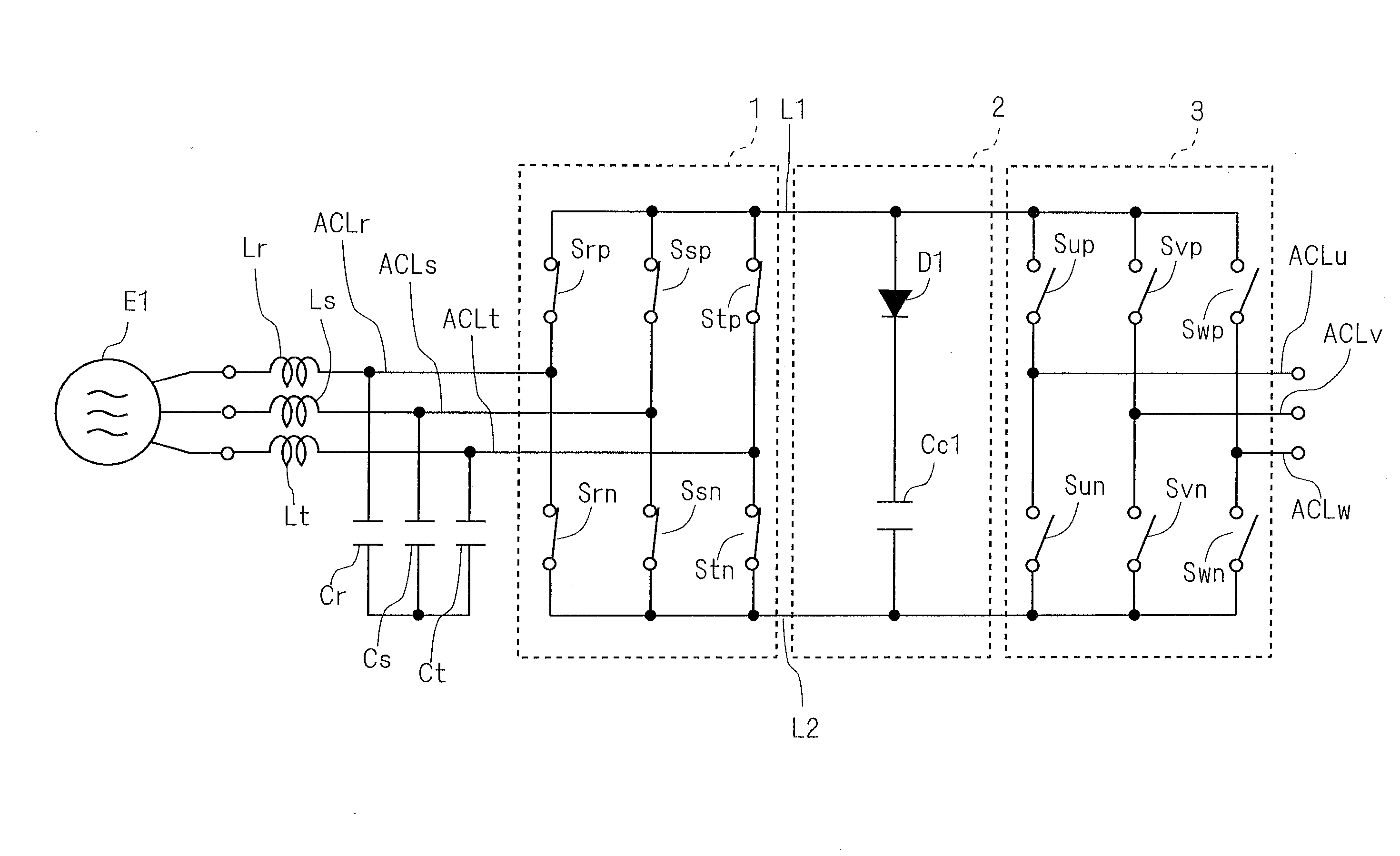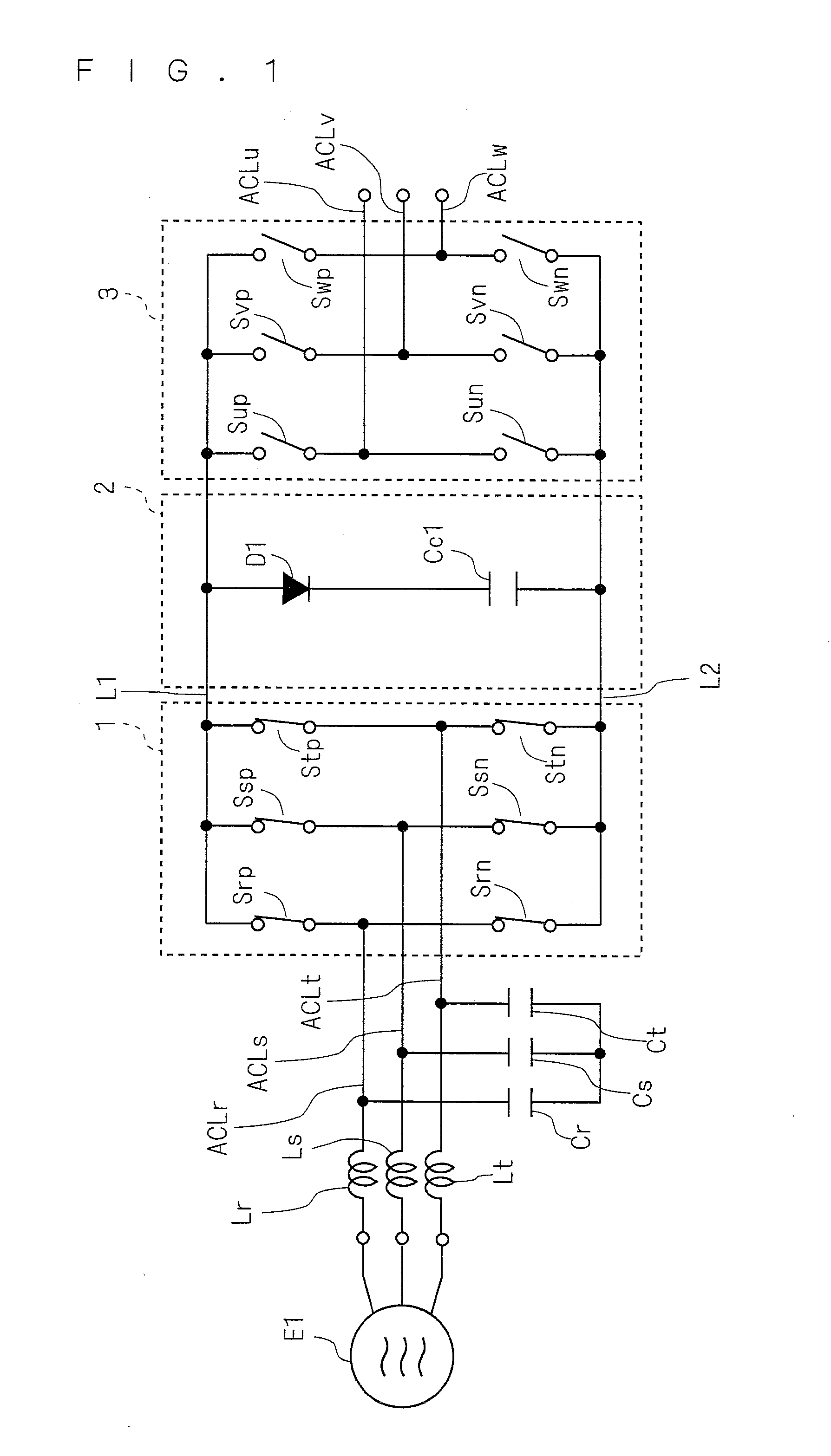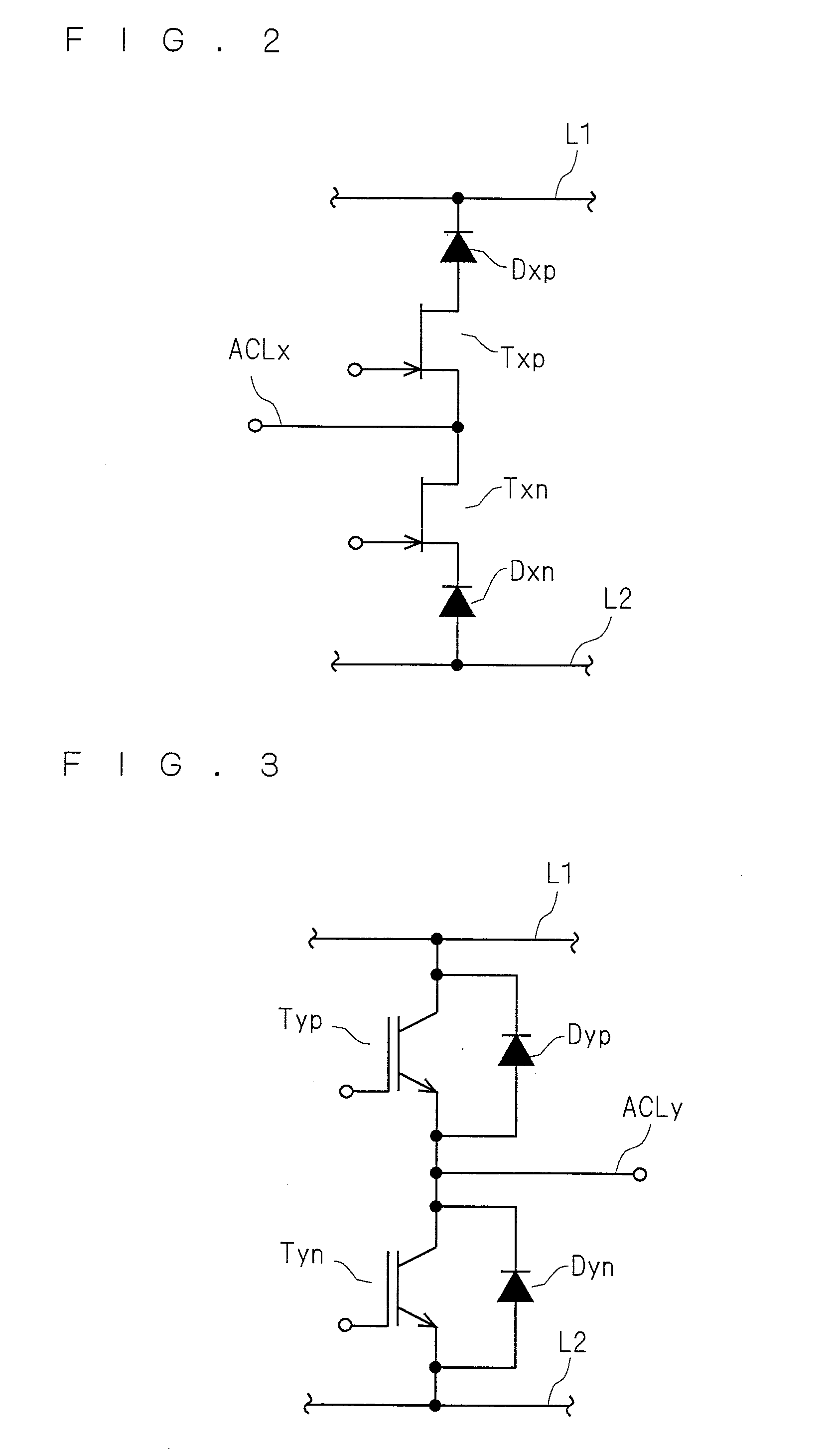Power converter
a converter and power technology, applied in the field of power converters, can solve the problems of inrush current flowing from the input capacitor to the clamp capacitor, and the converter cannot regenerate the induced current of an inductive load, and achieve the effects of reducing circuit size and manufacturing cost, convenient configuration, and convenient manufacturing
- Summary
- Abstract
- Description
- Claims
- Application Information
AI Technical Summary
Benefits of technology
Problems solved by technology
Method used
Image
Examples
first embodiment
[0029]FIG. 1 shows an example of a conceptual configuration of a direct power converter according to a first embodiment. The direct power converter includes a plurality of input lines ACLr, ACLs and ACLt, reactors Lr, Ls and Lt, capacitors Cr, Cs and Ct, a current-source converter 1, DC power supply lines L1 and L2, a clamp circuit 2, a voltage-source inverter 3, and a plurality of output lines ACLu, ACLv and ACLw.
[0030]The input lines ACLr, ACLs and ACLt are each connected with a power supply E1. The power supply E1 is a polyphase AC power supply and, for example, a three-phase AC power supply. The power supply E1 applies a three-phase AC voltage between ones of the input lines ACLr, ACLs and ACLt.
[0031]The reactors Lr, Ls and Lt are provided on the input lines ACLr, ACLs and ACLt, respectively.
[0032]The capacitors Cr, Cs and Ct are interposed between ones of phases of the input lines ACLr, ACLs and ACLt through, for example, Y-connection. That is, the capacitors Cr and Cs are conn...
second embodiment
[0059]FIG. 6 shows an example of a conceptual configuration of a direct power converter according to a second embodiment. Compared with the direct power converter shown in FIG. 1, a control part 4 is further provided.
[0060]The control part 4 is connected to both ends of the clamp capacitor Cc1 and uses the voltage across the both ends of the clamp capacitor Cc1 as an operation power supply. The control part 4 supplies signals SSxp and SSxn to the current-source converter 1 (more specifically, transistors Txp and Txn) and supplies signals SSyp and SSyn to the voltage-source inverter 3 (more specifically, transistors Typ and Tyn).
[0061]The transistors Txp, Txn, Typ and Tyn are controlled to be brought into conduction / non-conduction based on the signals SSxp, SSxn, SSyp and SSyn, respectively.
[0062]According to the direct power converter as described above, a rectifier circuit that supplies the operation power supply to the control part 4 can be omitted, and thus a circuit size and a m...
third embodiment
[0065]FIG. 8 shows an example of a conceptual configuration of a direct power converter according to a third embodiment. Note that subsequent stages to the clamp circuit 2 are omitted in FIG. 8. Compared with the direct power converter shown in FIG. 1, resistors R3 and R4 and switches S1 and S2 are further provided.
[0066]The resistors R3 and R4 are provided on at least any two of the input lines ACLr, ACLs and ACLt. For example, the resistors R3 and R4 are provided on the input lines ACLr and ACLt.
[0067]Accordingly, in charging the clamp capacitor Cc1, the current flowing from the power supply E1 to the clamp capacitor Cc1 flows through the resistors R3 and R4, whereby it is possible to reduce the inrush current flowing from the power supply E1 to the clamp capacitor Cc1. Therefore, the inrush current causes no problem even when, for example, an electrolytic capacitor having a large electric capacitance is used as the clamp capacitor Cc1.
[0068]The switches S1 and S2 are, for example...
PUM
 Login to View More
Login to View More Abstract
Description
Claims
Application Information
 Login to View More
Login to View More - R&D
- Intellectual Property
- Life Sciences
- Materials
- Tech Scout
- Unparalleled Data Quality
- Higher Quality Content
- 60% Fewer Hallucinations
Browse by: Latest US Patents, China's latest patents, Technical Efficacy Thesaurus, Application Domain, Technology Topic, Popular Technical Reports.
© 2025 PatSnap. All rights reserved.Legal|Privacy policy|Modern Slavery Act Transparency Statement|Sitemap|About US| Contact US: help@patsnap.com



